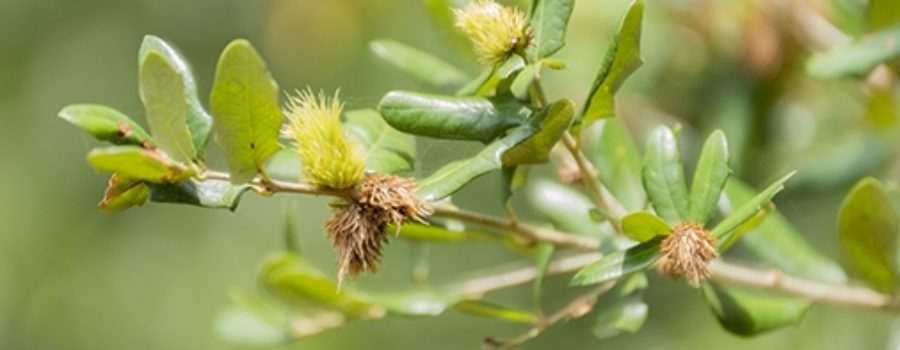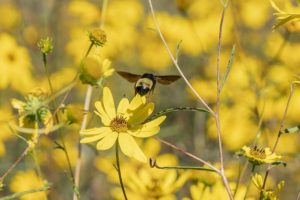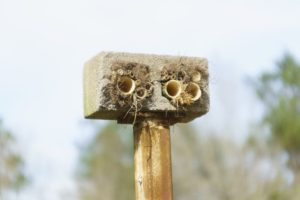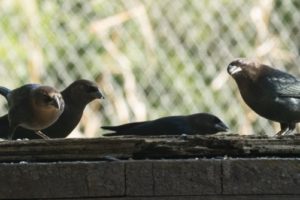The Leafy Oak Gall Wasp
A correct identification of the most puzzling observation made to date at Vista Farm is that of the Leafy Oak Gall Wasp, Andricus quercusfoliatus.
We first observed a green leaf-like spray attached to the stems of some small live oak saplings on September 5, 2019, but misidentified them as some kind of reproductive growth even though no acorn developed. When new ones appeared in 2020, we began seriously trying to track down their nature. We took some photos and after two months and a lot of internet research, we were convinced the strange green thing was indeed a gall formed by an insect.
An extensive search on BugGuide.net led us to post our photos hoping to get a positive ID. BugGuide curator, Charley Eisman, a freelance naturalist in Massachusetts, moved them to the A. quercusfoliatus page. Mr. Eisman kindly referred us to Dr. Scott P. Egan, associate professor of evolutionary biology at Rice University in Houston. His lab studies the community of gall wasps and their predators on live oaks across the Gulf Coast from Florida to Texas and down to Veracruz, Mexico. We finally had the expert we were looking for and Dr. Egan was most generous in explaining the details about our little gall-making wasp.
Andricus quercusfoliatus
“The gall former you have found is correctly identified as Andricus quercusfoliatus and is one of 12 different species of cynipid wasps that induce galls on the live oaks”, he said. “One thing to note about gall wasps is that they have two generations per year. Typically one in the spring and one in the fall, where each generation induces a slightly different type of gall. Moreover, the fall generation is usually an all female asexual generation, and the spring generation is a sexual generation with males and females. So what you are seeing [in October] is the fall asexual generation of this species.
“The big green thing that caught your eye is the manipulated cap (or top) of the oak acorn; a brown pod at the center is what was supposed to be the actual acorn itself! That pod is typically jettisoned out sometime during the growing season and the pod stays in the leaf litter until the wasp emerges from it as an adult. Not every gall does it; but most do. And you can commonly find the ‘gall’ without the inner chamber. It is hard to catch it at the right stage, but if you place some small mesh bags over the gall when green, you can catch it before it turns brown as it matures and pushes out the inner pod.
“What is even more interesting is that inside that pod, you can get the original gall former, OR one member of the species-rich community of predatory wasps we call parasitoids. As many as 20-30 different species of predators can come out of a gall.”
We hurried back to the same locations, to pick off one of the green things, bag some or slice open others hoping to find the pod, but by then all the green things had turned brown and appeared dead, having jettisoned their pods. We picked off a few and pulled them apart to find at their base a hard, brown ball. Dr. Egan explain, “In regards to the hard brown ball at the center of the gall, that is the inner chamber of the gall.” We noticed there were no acorns at all on any small sapling that also had galls, so the question becomes whether a single wasp uses every single acorn pod on the whole tree to put an egg and form a gall or whether there are many wasps?
Callirhytis quercusbatatoides
So it appears we missed a short window of opportunity in early September to catch the culprit before it jettisoned its pod. With two generations per year it’s a good bet we will be ready for the next one. We have observed these green galls as well as fibrous, brown stem galls on young live oaks on the edge of a dense thicket along our east property line, on the south edge of the pond and a few on mature live oaks. Scattered about in the meadows there are a number of very young live oak saplings no more than about four years old. They have full sun all day and no competition for growing room. Most all of them have a thick concentration of both kinds of galls. Dr. Egan explained, “The [brown] stem galler you sent in the picture is Callirhytis quercusbatatoides, which also attacks live oaks across the gulf coast.” So, are the wasps drawn to them because of their young, tender stems and twigs as opposed to the thick woody acorn-bearing twigs of the more mature oaks? We’ll try to find out, but in the meantime we couldn’t resist slicing one open to see what was inside–a tiny cavity with a tiny yellowish larva!
Cynipid Wasps
Perhaps we will never actually see either of these very tiny gall-makers through our own camera lens, but they were first identified by the renown entomologist William Harris Ashmead in the 1880s in Florida. There are about 1,300 cynipid wasp species worldwide according to Wikipedia and the kind of gall that forms, from round brown ones to pinkish red dots or that burrow inside the leaf tissue, depends on the species of oak, whether the egg is laid on a leaf, an acorn or a twig and whether the season is spring or fall. The unusual gall formed by A. quercusfoliatus is exclusive to live oak (Q. virginiana, Sand Live Oak (Q. geminata), and Texas Live Oak (Q. fusiformis). Contributors to iNaturalist.org have observed this particular wasp in a range from around Camden, North Carolina, south to around Homestead, Florida, to West Texas and down to Montemorelos, Mexico. They do not seem to be harming our trees except in the acorn-creating process.
This article will be updated as new information is discovered.
Sources: Dr. Scott P. Egan, Rice University; iNaturalist.org; https://bugguide.net; Cynipid Galls of the Eastern United States, Lewis H. Weld. 1959, Ann Arbor, MI; Wikipedia and various research papers and images found on the internet.





Recent Comments